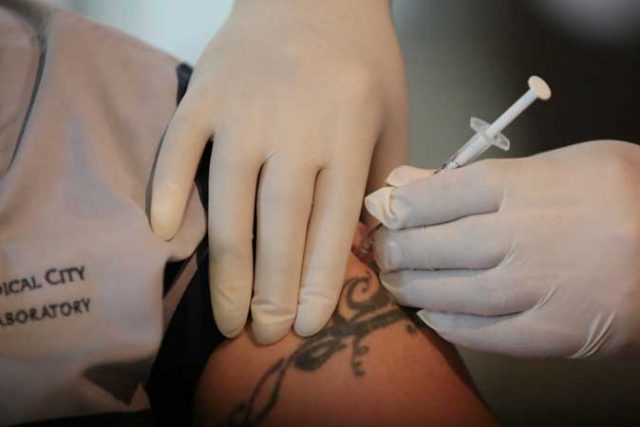We all rejoiced when Standard and Poor’s (S&P) global ratings on May 27 maintained the Philippines’ BBB+ rating and assigned it a “stable” outlook on expectations of a healthy economic recovery. S&P announced in its formal statement that it “affirmed the ratings because we believe the Philippines will continue to have good economic recovery prospects once the COVID-19 pandemic is contained, and that the government’s fiscal performance will strengthen accordingly.”
Anchoring this steady rating action are what S&P described as “signs of recovery” following the Government’s ability to contain the pandemic through more decisive sourcing and rollout of the COVID-19 vaccines. For S&P, three other factors are critical: strong external payments position, fiscal reforms, and strong infrastructure support.
S&P trusts that the Philippine economy could grow by 7.9% in 2021 from last year’s 9.6% recession, even surpassing the official target of 6-7%. With an actual contraction of 4.2% in Q1 2021, we need to grow by an average of at least 9.4% for the last three quarters to deliver on the low end of the output target. To meet S&P’s forecast, real GDP should grow by nearly 12% average for three quarters. Base effects will be overworked.
Moody’s Analytics takes a different view on the growth prospects and we should combine its insight in our whole of nation efforts to manage the risks on the ground. Moody’s raises the issue of our weak pandemic management, that based on today’s pace, it might take another two years to achieve massive vaccination and ensure mass protection. Income inequality could also be a hindrance to a more bullish performance.
We all realize that this pandemic is indeed like no other crisis, so every bit of understanding should be precious. But what happens if we fail the growth standard of S&P?
Growth is the logical outcome of successful pandemic mitigation through sustained observance of health protocols as we aim for a more massive administration of the vaccines.
Taming the pandemic remains a big problem. Worldometer reports that as of June 2, the Philippines’ infections totaled 1.24 million while deaths stood at 21,158. For perspective, the world as a whole has vaccinated more than 1.9 billion out of the global population of nearly 7.9 billion. In absolute number, the US topped the list with 295 million doses administered, translating into 41.29% coverage. The Philippines managed to complete 4.3 million doses covering about 0.93% of its over 110 million population.
In one of the interviews with Vaccine Czar Carlito Galvez, Jr., he cited a rollout speed of about one million vaccines per week! With some 31 weeks to go before the end of 2021, we would have around 35 million doses, or roughly 17.5 million people of two doses each. This is good progress, but still a far cry from what herd resilience is all about.
Some jurisdictions with higher vaccination rates than the Philippines have recently experienced a resurgence of some variants and re-imposed restrictions on mobility and business activities. In an earlier estimate, The Economist presented a timeline showing the country will achieve some 60% vaccination only by Q4 2023. We should prove it wrong and minimize this downside risk to economic growth.
In previous columns, we had commented on the three planks of S&P’s confidence in our economic prospects. On the balance of payments, it looked good in 2020 because the economy was in four quarters of economic contraction. Thus, the decline in imports and outward investments combined with strong inflows of foreign loans produced a significant balance of payments surplus, a strong peso, and a sharp accumulation of gross international reserves. Recent data on foreign investments continue to indicate weak flows and confidence of the foreign investment community in our short-term economic prospects. Once we see some stronger signs of economic recovery, a reversal is unavoidable.
For instance, Oxford Economics reported that the “Philippines remains a laggard in the ASEAN-6 economies… even as exports are likely to rebound from a dismal 2020 performance.” This think tank also observed that the Philippines’ economic scars from the pandemic were the deepest and most serious. For this reason, it is believed our economic recovery will be protracted.
On fiscal reforms, the recent enactment of the Corporate Recovery and Tax Incentives for Enterprises (CREATE) Act should be able to provide businesses, especially micro, small and medium enterprises (MSMEs), with sharp cuts in corporate income taxes (CIT) and a redesigned fiscal incentives system to attract investments and create jobs in a big way. Of course, this is negative for revenues. More tax reform measures are pending in Congress but it is heroic to assume they can be legislated in time for this year and the next to produce quick results.
In addition, two game-changing developments should be managed by Congress. The demand for limited public revenues has risen with, one, the increase in the military and uniformed personnel salaries and pension, and, two, the Supreme Court ruling on the Mandanas-Garcia case which expands the revenue base of local government units’ (LGUs) share of internal revenue allotment.
The fiscal challenge is not only on the revenue and expenditure sides. Financing will be equally thorny. It is possible the National Government (NG) would probably attempt a budget realignment to achieve a deficit-neutral budget next year. This is impossible because revenues are scarce during recession and 2022 is an election year. Instead, the NG could ramp up borrowings, sell public assets, and require more dividends from government-owned and -controlled corporations and financial institutions.
How these interconnected fiscal dynamics would play out this year and the next to support growth while maintaining fiscal sustainability will certainly be a big problem for our hard-working economic managers. Whatever they can accomplish today should be an important springboard for the next government.
On infrastructure, the challenge is the timely implementation of Build, Build, Build flagship projects to fuel economic recovery. A few months back, it was reported that some 104 projects worth P4.1 trillion had been identified since 2017. These projects cover the gaps in transport and mobility, water, power and energy, information and technology, urban development and renewal, as well as health. Four had already been completed and 42 were on-going construction.
In his confirmation the other day at the Senate, Socioeconomic Planning Secretary Karl Chua updated the legislature that 112 projects have been identified, 80% have already been approved and 51 projects are in the construction stage, and 31 are under pre-construction or awaiting implementation.
Funding holds the destiny of these projects, and with competing demands on the budget in the light of the pandemic, prioritization becomes key. The next administration will hopefully inherit a good set of projects that, according to Secretary Chua, are “well designed and are financially capable and they will not add to future burden to the people in terms of payment or liabilities.”
Nobody can deny that a host of uncertainties remain out there. It is always wise to process important pieces of the macroeconomic puzzle rather than be mesmerized by the more salient information. The data on corporate distress as highlighted by the Financial Stability Committee last year indicates a possible slow burn contagion. The Bangko Sentral ng Pilipinas data on non-performing loans indicates a slow but invariably rising trend of corporate distress and bank difficulty. Mobility indicators are somewhat picking up pace but still lower than normal. Domestic liquidity and bank loans are pointing south. Oil prices could jump up and upset inflation forecasts. Power outage hinders growth.
With good governance, these are not insurmountable.
We can always admire Trade and Industry Secretary Ramon Lopez’s singular optimism that “the domestic economy is still on track for a V-shaped recovery with improved investment climate this year.”
Diwa C. Guinigundo is the former Deputy Governor for the Monetary and Economics Sector, the Bangko Sentral ng Pilipinas (BSP). He served the BSP for 41 years. In 2001-2003, he was Alternate Executive Director at the International Monetary Fund in Washington, DC. He is the senior pastor of the Fullness of Christ International Ministries in Mandaluyong.












